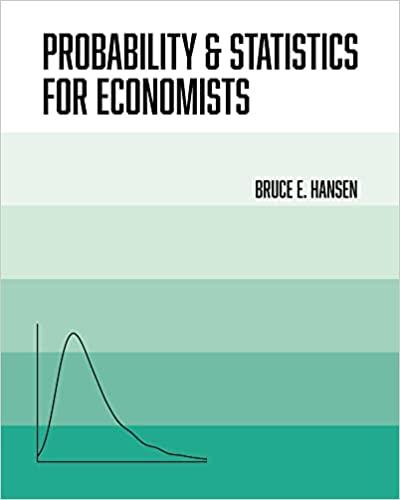Surveys routinely ask discrete questions when the underlying variable is continuous. For example, wage may be continuous
Question:
Surveys routinely ask discrete questions when the underlying variable is continuous. For example, wage may be continuous but the survey questions are categorical. Take the following example.
wage Frequency
$0 · wage · $10 0.1
$10 Ç wage · $20 0.4
$20 Ç wage · $30 0.3
$30 Ç wage · $40 0.2 Assume that $40 is the maximal wage.
(a) Plot the discrete distribution function putting the probability mass at the right-most point of each interval. Repeat putting the probability mass at the left-most point of each interval. Compare.
What can you say about the true distribution function?
(b) Calculate the expected wage using the two discrete distributions from part (a). Compare.
(c) Make the assumption that the distribution is uniform on each interval. Plot this density function, distribution function, and expected wage. Compare with the above results.
Step by Step Answer:






